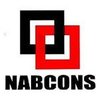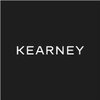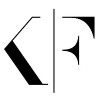Filter interviews by
SPR & CO Interview Questions and Answers
10 Interview questions
BRS is used to document the agreed upon requirements between the client and the development team.
BRS helps in ensuring that both parties have a clear understanding of the project requirements.
It serves as a reference point throughout the development process.
BRS helps in minimizing misunderstandings and scope creep.
It provides a basis for testing the final product against the initial requirements.
Examples: Software...
A journal entry is a record of a financial transaction in a company's accounting system.
Journal entries are used to record debits and credits for each transaction.
They help in maintaining accurate financial records and tracking the flow of money within a company.
Each journal entry includes a date, description, accounts affected, and amounts debited and credited.
For example, a journal entry for a sale transaction w...
Petty cash is a small amount of cash kept on hand by a company for minor expenses.
Petty cash is used for small, everyday expenses that are impractical to pay for with a check or credit card.
It is typically kept in a secure location and managed by a designated employee.
Replenishment of petty cash is done by submitting receipts for the expenses incurred.
Common uses of petty cash include office supplies, postage, and...
Contra entry is a transaction that involves both a debit and a credit entry to the same account, resulting in a net zero effect on the account balance.
Contra entries are typically used to correct errors, transfer funds between accounts, or record non-cash transactions.
Examples of contra entries include bank transfers, cash withdrawals for personal use, and corrections of accounting mistakes.
Contra entries are usua...
Bank reconciliation statement is a document that compares the bank's records with the company's records to ensure they match.
It is used to identify any discrepancies between the two sets of records.
It helps in ensuring the accuracy of the financial transactions recorded by the company.
Common items on a bank reconciliation statement include outstanding checks, deposits in transit, bank errors, and service charges.
T...
Balance sheet is a financial statement that shows a company's assets, liabilities, and shareholders' equity at a specific point in time.
It provides a snapshot of a company's financial position.
Assets are what the company owns, liabilities are what it owes, and shareholders' equity is the difference between the two.
The balance sheet follows the accounting equation: Assets = Liabilities + Shareholders' Equity.
It hel...
A creditor is a person or institution to whom money is owed.
A creditor is someone who has provided goods or services on credit to another party
Creditors can include individuals, businesses, or financial institutions
Examples of creditors include suppliers, banks, and bondholders
GST stands for Goods and Services Tax, a value-added tax levied on the supply of goods and services.
GST is a comprehensive tax system that has replaced multiple indirect taxes in India.
It is a destination-based tax, which means that the tax is collected at the point of consumption.
GST has three components - CGST, SGST, and IGST, which are levied by the central and state governments.
It has simplified the tax struct...
Golden rules of accounting are basic principles that guide the process of recording financial transactions.
There are three golden rules of accounting: Debit what comes in, Credit what goes out; Debit the receiver, Credit the giver; Debit expenses and losses, Credit income and gains
These rules help maintain the balance in the accounting equation: Assets = Liabilities + Equity
For example, when a company receives cas...
There are several types of taxes, including income tax, sales tax, property tax, and corporate tax.
Income tax is a tax on an individual's earnings or income.
Sales tax is a tax on the sale of goods and services.
Property tax is a tax on the value of real estate or personal property.
Corporate tax is a tax on the profits of corporations.
Other types of taxes include excise tax, estate tax, and payroll tax.
SPR & CO Interview Experiences
2 interviews found
I applied via Approached by Company and was interviewed in Feb 2024. There were 3 interview rounds.
(4 Questions)
- Q1. Family background
- Ans.
I come from a close-knit family that values education and support, fostering a strong sense of community and resilience.
My parents are both educators, which instilled a love for learning in me from a young age.
I have two siblings; we often collaborate on projects, showcasing our teamwork skills.
Family gatherings are frequent, emphasizing our strong bonds and shared values.
My grandparents played a significant role in my...
- Q2. Done any course or Internship
- Q3. When can you join if selected
- Q4. Ms Excel formulas
(5 Questions)
- Q1. What is Balance sheet
- Q2. What is Journal entry
- Ans.
A journal entry is a record of a financial transaction in a company's accounting system.
Journal entries are used to record debits and credits for each transaction.
They help in maintaining accurate financial records and tracking the flow of money within a company.
Each journal entry includes a date, description, accounts affected, and amounts debited and credited.
For example, a journal entry for a sale transaction would ...
- Q3. What is petty cash
- Ans.
Petty cash is a small amount of cash kept on hand by a company for minor expenses.
Petty cash is used for small, everyday expenses that are impractical to pay for with a check or credit card.
It is typically kept in a secure location and managed by a designated employee.
Replenishment of petty cash is done by submitting receipts for the expenses incurred.
Common uses of petty cash include office supplies, postage, and mino...
- Q4. What is contra entry
- Ans.
Contra entry is a transaction that involves both a debit and a credit entry to the same account, resulting in a net zero effect on the account balance.
Contra entries are typically used to correct errors, transfer funds between accounts, or record non-cash transactions.
Examples of contra entries include bank transfers, cash withdrawals for personal use, and corrections of accounting mistakes.
Contra entries are usually m...
- Q5. What is Bank reconciliation statement
(3 Questions)
- Q1. Why do we use BRS
- Ans.
BRS is used to document the agreed upon requirements between the client and the development team.
BRS helps in ensuring that both parties have a clear understanding of the project requirements.
It serves as a reference point throughout the development process.
BRS helps in minimizing misunderstandings and scope creep.
It provides a basis for testing the final product against the initial requirements.
Examples: Software deve...
- Q2. Golden rules of accounting
- Ans.
Golden rules of accounting are basic principles that guide the process of recording financial transactions.
There are three golden rules of accounting: Debit what comes in, Credit what goes out; Debit the receiver, Credit the giver; Debit expenses and losses, Credit income and gains
These rules help maintain the balance in the accounting equation: Assets = Liabilities + Equity
For example, when a company receives cash fro...
- Q3. What is creditor
- Ans.
A creditor is a person or institution to whom money is owed.
A creditor is someone who has provided goods or services on credit to another party
Creditors can include individuals, businesses, or financial institutions
Examples of creditors include suppliers, banks, and bondholders
I applied via Recruitment Consulltant and was interviewed before Nov 2021. There were 2 interview rounds.

(3 Questions)
- Q1. Junior audit executive
- Q2. What is mean by gst
- Ans.
GST stands for Goods and Services Tax, a value-added tax levied on the supply of goods and services.
GST is a comprehensive tax system that has replaced multiple indirect taxes in India.
It is a destination-based tax, which means that the tax is collected at the point of consumption.
GST has three components - CGST, SGST, and IGST, which are levied by the central and state governments.
It has simplified the tax structure a...
- Q3. What are the types of taxes
- Ans.
There are several types of taxes, including income tax, sales tax, property tax, and corporate tax.
Income tax is a tax on an individual's earnings or income.
Sales tax is a tax on the sale of goods and services.
Property tax is a tax on the value of real estate or personal property.
Corporate tax is a tax on the profits of corporations.
Other types of taxes include excise tax, estate tax, and payroll tax.
Interview Preparation Tips
- Junior audit executive
Implement ideas and creative thoughts
Top trending discussions






Interview questions from similar companies

Interview Questionnaire
11 Questions
- Q1. Tell me about yourself
- Q2. Why Alvarez?
- Ans.
Alvarez is a reputable company with a strong track record in the industry.
Alvarez has a proven track record of success in the industry
The company has a reputation for quality and reliability
Alvarez has a strong commitment to customer satisfaction
The company offers a wide range of products and services to meet the needs of its customers
- Q3. Why consult?
- Q4. Work experience at Tata Steel.
- Q5. The case was printed and quite long. It was about auto components part and everything was given about it. Suggestions were to be given whether a new company should enter it or not. I was given time to read...
- Q6. Tell me something that is not mentioned in the CV
- Ans.
I have a passion for cooking and have won several local cooking competitions.
I enjoy experimenting with different cuisines and creating my own recipes.
I have taken cooking classes and workshops to improve my skills.
I have volunteered at a local soup kitchen to help prepare meals for the homeless.
I have a food blog where I share my recipes and cooking tips.
I have also catered small events for friends and family.
- Q7. How do your friends perceive you?
- Ans.
My friends perceive me as a reliable and supportive person who is always there for them.
Reliable and dependable
Supportive and empathetic
Good listener
Fun and easy-going
Honest and trustworthy
- Q8. Do you read management books?
- Ans.
Yes, I do read management books.
I believe that reading management books is essential to keep myself updated with the latest trends and techniques in the field.
I have read books like 'The Lean Startup' by Eric Ries, 'Good to Great' by Jim Collins, and 'The 7 Habits of Highly Effective People' by Stephen Covey.
These books have helped me develop my leadership skills, improve my decision-making abilities, and enhance my ov...
- Q9. One finance problem
- Q10. One current affairs question
- Q11. Any question would you like to ask me
Interview Preparation Tips
Experience: I had well prepared the initial questions – about myself, why consult and why Alvarez questions which helped me in gaining confidence. It was my only interview of the day so I was quite relaxed. The interviewers also seemed friendly.
Round: HR Interview
Experience: I hadn’t prepared ‘Something that is not mentioned in the CV’ question. I had to come up with on the spot answer which could have been better.
General Tips: Do well prepare your HR questions and work experience part. It really helps on the final day.
Skills:
College Name: IIM Lucknow

I applied via Referral
Interview Preparation Tips
Experience: There were 3 groups formed when the A&M team arrived on campus. A&M conducted 3 rounds of interviews for each candidate and after all the 3 groups had interviewed the candidate, they used to meet and decide on the candidate. Thus the procedure was elaborate but slow. All the interviews were personal interviews.
After waiting outside for almost 7 hours, the interviews were conducted in a very professional manner and the interviewers focus in knowing your past was crystal clear.
Each of the interviewer asked me to go through my resume in a detailed fashion. Each and every bullet point in my resume was questioned and cross questioned. But the interview was not stressful at any point in time. The key reason was that there were no lies in the resume and hence I was very sure about the background of every point (situation, what action I took, why I took that action, what I did, who helped me, how things eventually worked out and what was the result). There were some usual questions as well on strengths, etc. Such questions were few and were randomly thrown at you. Since A&M is mainly a client oriented company who as a part of turnaround would want to “get things done”, I kept all my answers focused towards this theme. Be aware that the interviewers may try to derail you in case you have very well rehearsed answers. So in between questions, there will be some side talk. That can put you off. So being relaxed would help you just laugh/smile that their comments and then continue where you left off. This interview was a walk-in interview for me on day 6, but I had planned on applying here before and hence had some overview of the firm and what it does. That helped me in asking several questions throughout the day. My questions were mainly on switching my focus from IT to operation and finance. At the end of the day, I was told to contact Amit Laud who would be conducting my interview from his base location. This interview was also a personal interview. I googled him and found some details on him. He was an MBA from Wharton, done a stint in Mckinsey, GE and now was the acting CIO for some client company so some questions on IT implementation would be due. I knew that if I get through then I might end up working for him.
Tips: Keep your cool. It is not important to know how to fix laptop or how to fix account statements (if you are CA). But it was more about how you handle such deliberate distracting situations (as if they were your clients) and make the atmosphere friendly.
Skills: HR Skills
College Name: Indian School Of Business (ISB)

Interview Questionnaire
2 Questions
- Q1. Analyse the hair care industry for a company that wants to enter the Indian market; Given the profits of two companies, where would you invest
- Ans.
The hair care industry in India is growing rapidly, with increasing demand for natural and organic products. Investment decision depends on company goals and market research.
India's hair care industry is expected to reach $13.3 billion by 2025
Growing demand for natural and organic products
Strong competition from established brands like Dove, Pantene, and L'Oreal
Opportunities for niche players in the market
Investment de...
- Q2. HR questions (leadership experiences, why does the profile interest you etc.)
Interview Preparation Tips
Experience: I was calm throughout the process, had practiced more difficult case studies for other consulting interviews, so the one asked in this interview seemed simple.
General Tips: Understand the work profile well before interviewing. Have basic financial concepts in place (basic FRA knowledge form the 1st term would suffice), read a little about M&As.
Skills:
College Name: IIM Lucknow

Interview Questionnaire
6 Questions
- Q1. The case given to me dealt with 2 skin care companies, market leaders in their segment. 2 new market companies had entered the market eroding off the market share of the established firms. Data reading wor...
- Q2. Discuss the current market situation?
- Ans.
The current market situation is volatile due to the ongoing COVID-19 pandemic and geopolitical tensions.
The COVID-19 pandemic has caused disruptions in global supply chains and reduced consumer demand.
Geopolitical tensions, such as the US-China trade war, have led to uncertainty and market fluctuations.
The technology sector has been performing well, while industries such as travel and hospitality have been hit hard.
Inv...
- Q3. What should be the strategy of SkinCareIndiaPvt.Ltd( the market player in the mass market segment)
- Ans.
SkinCareIndiaPvt.Ltd should focus on product innovation, competitive pricing, and effective marketing strategies.
Invest in research and development to create innovative products
Offer competitive pricing to attract price-sensitive customers
Implement effective marketing strategies to increase brand awareness and customer loyalty
Expand product line to cater to different customer needs
Partner with influencers and beauty bl...
- Q4. If you are a PE which firm would you invest in?
- Ans.
I would invest in a firm with a strong management team, a clear growth strategy, and a solid financial track record.
Look for firms with experienced and successful leaders
Research the company's growth potential and plans for expansion
Analyze the company's financial statements and performance history
Consider the industry and market trends
Examples: Blackstone, KKR, Carlyle Group
- Q5. A finance question regarding P&L statement of 2 companies were asked
- Q6. Questions regarding why interested in finance, why consulting etc
Interview Preparation Tips
Experience: In the first round of the interview these questions were discussed in detail and various other scenarios were also taken into consideration
Round: Technical Interview
Experience: I think I was able to justify my interest in finance which added to my cause.
Skills:
College Name: IIM Lucknow

I applied via Referral and was interviewed before Dec 2019. There were 3 interview rounds.
Interview Questionnaire
3 Questions
- Q1. If You are an experience holder then about your experience
- Q2. Expected CTC
- Q3. Why you left your previous organisation
Interview Preparation Tips
Open about your experience , What clients you have handled.

(2 Questions)
- Q1. They don't ask anything great just basic easy questions
- Q2. 5 principals of internal audit......
- Ans.
The 5 principals of internal audit are integrity, objectivity, confidentiality, competency, and compliance.
Integrity: being honest and truthful in all aspects of the audit process
Objectivity: remaining impartial and unbiased throughout the audit
Confidentiality: ensuring that sensitive information is protected and kept confidential
Competency: possessing the necessary knowledge and skills to perform the audit effectively
...
Interview Preparation Tips

I applied via Referral and was interviewed in May 2023. There were 3 interview rounds.

(1 Question)
- Q1. CV overview i.e education and corporate experience
(4 Questions)
- Q1. What is asset management & real estate sector
- Ans.
Asset management is the professional management of various types of assets, including real estate, to maximize their value and generate returns.
Asset management involves the strategic planning, acquisition, operation, and disposition of assets.
Real estate sector refers to the industry that deals with the buying, selling, and management of properties.
Asset management in the real estate sector focuses on optimizing the v...
- Q2. How India Real Estate Sector grow in past
- Ans.
The India real estate sector has experienced significant growth in the past.
The real estate sector in India has witnessed a boom in the past few decades.
Rapid urbanization and population growth have fueled the demand for housing and commercial spaces.
Government initiatives like the introduction of Real Estate Regulatory Authority (RERA) and affordable housing schemes have further stimulated the sector.
Foreign direct in...
- Q3. Company Overview
- Q4. Excel Formula related question

I applied via Naukri.com and was interviewed before Oct 2023. There was 1 interview round.
(2 Questions)
- Q1. Tell me about yourself
- Q2. Articleship Experience
- Ans.
My articleship experience was enriching, providing hands-on exposure to various aspects of accounting and auditing.
Worked on auditing financial statements for small to medium-sized enterprises, enhancing my analytical skills.
Assisted in tax planning and compliance, which deepened my understanding of tax regulations and their implications.
Participated in client meetings, improving my communication skills and ability to ...
Interview Preparation Tips
SPR & CO Interview FAQs
Tell us how to improve this page.
Interview Questions for Popular Designations
- Executive Interview Questions
- Senior Engineer Interview Questions
- Consultant Interview Questions
- Associate Software Engineer Interview Questions
- Graduate Engineer Trainee (Get) Interview Questions
- Java Developer Interview Questions
- Accountant Interview Questions
- Senior Software Engineer Interview Questions
- Show more
Overall Interview Experience Rating
based on 3 interview experiences
Difficulty level
Duration
Interview Questions from Similar Companies
SPR & CO Reviews and Ratings
based on 33 reviews
Rating in categories
|
Senior Associate
16
salaries
| ₹3 L/yr - ₹7 L/yr |
|
Assistant Manager
14
salaries
| ₹7 L/yr - ₹10.9 L/yr |
|
Associate Consultant
12
salaries
| ₹3.2 L/yr - ₹6.8 L/yr |
|
Analyst
7
salaries
| ₹1.8 L/yr - ₹5 L/yr |
|
Audit Manager
7
salaries
| ₹7 L/yr - ₹11 L/yr |

Cholamandalam MS Risk Services

Valueonshore Advisors

Thinksynq Solutions

Nabard Consultancy Services
- Home >
- Interviews >
- SPR & CO Interview Questions










